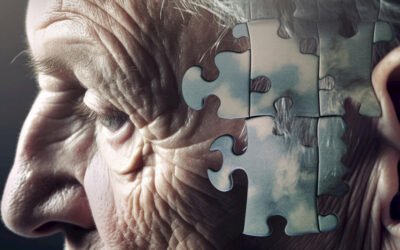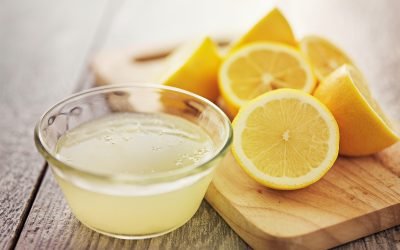Cannabis (Cannabis indica)
Even in the 21st century, many people still become uneasy when the topic of cannabis is brought up. There is a lingering fearfulness and resistance, inspired by its mischaracterization as the “devil weed” by closed-minded moralists and pharmaceutical companies eager to block access to any unpatentable medication that competes with their highly profitable, patented ones. On the other hand, its image, reinforced by hundreds of Hollywood movies, as a goofiness-, and munchies-, inducing recreational drug, also interferes with the acknowledgment of cannabis as being perhaps the greatest healing substance in herbal medicine.
There is no other herb that serves as well for someone living through the ordeal of cancer and its medical treatment. Cannabis relieves pain, inflammation and nausea, exerts a relaxation effect, and enhances appetite among those who, due to the side-effects of chemotherapy, would otherwise have no desire to eat.
Certainly, cannabis is a leading recreational drug. However, what I will be discussing in this article is the medicinal use of cannabis. I do not advocate smoking cannabis, as smoking any substance, especially when rolling paper is used, releases harmful toxins into the blood. Instead, I favor the absorption of the beneficial cannabinoids via ingestion and transdermal salves.
Of course, as with any medicinal substance, there needs to be a basic understanding of its active ingredients, therapeutic uses and methods of administration.
In Part I of this article, I will be providing general information about cannabis’ active ingredients and physiological actions. I will also specify which type of cannabis I suggest for homemade preparations.
Unfortunately, cannabis is still illegal in some states of the U.S. and many places around the world, and so, many of you may not be able to make practical use of much of the information that follows. However, many states in the U.S., as well as other places around the world have legalized the personal use of cannabis. Thus, it is now freely and legally available to millions of people.
Cannabis as a Medicine
Cannabis provides a wide range of neurological benefits, in part due to its analgesic (pain- relieving) and anti-inflammatory actions. Cannabinoids (cannabis’ active medicinal ingredients) are a group of chemical compounds that directly interact with the body. Of the more than 400 natural chemical compounds in the cannabis plant at least 85 are classified as cannabinoids. Many of the non-cannabinoid compounds are referred to as “entourage substances” that act to improve the way that THC and CBD function. The two best-known cannabinoids are tetrahydrocannabinol (THC) and cannabidiol (CBD).
THC is responsible for the psychoactive impact of cannabis, producing the “high” associated with its use. Some of the effects of THC include pain relief, relaxation, sense of euphoria, increased creativity and an overall feeling of well-being.
CBD is the most studied non-psychoactive cannabinoid in marijuana. It is non-psychoactive because, for the most part, it doesn’t directly engage with the brain or spinal cord. CBD exerts analgesic and anti-inflammatory actions and helps improve mood.
The fact that the human body has an in-built system dedicated to the utilization of cannabinoids for healing purposes suggests that its medicinal use by humans is part of nature’s design. Cannabinoids interact directly with the body via the endocannabinoid system (ECS) – a complex system that assists in maintaining homeostasis. The ECS helps regulate immune system and pain responses, metabolism, intracellular communication, appetite and memory.
The body naturally produces its own cannabinoids, known as endocannabinoids. The ECS is designed to regulate and dispense cannabinoids throughout the body. Thus, the cannabinoids from cannabis can readily integrate into the ECS.
The ECS has two types of receptors — CB1 and CB2. Each receptor binds to a specific part of the ECS and affects different systems, and individual cannabinoids activate different receptors. CB1 receptors are found throughout your body, but concentrated in the brain and spinal cord. CB1 receptors in the amygdala region of the brain help process memories and emotions. Those in the hypothalamus help regulate appetite.
Cerebral CB1 receptors are associated with both feelings of euphoria and anti-convulsive pathways. CB1 receptors are absent in the medulla oblongata and brain stem responsible for cardiovascular and respiratory functions. Cannabis does not affect these areas directly because of this absence. A lack of cannabinoid receptors on the mesocorticolimbic pathway significantly decreases the risk of physical addiction because there is no dopaminergic pathway (neural networks in the brain used by the neurotransmitter dopamine) involvement.
Dopamine, involved in neurological and physiological functioning, plays a role in motor function, mood, and the experience of pleasure. Drugs such as cocaine can cause a surge in dopamine activity in the brain eliciting a pleasure response. But repeated drug use raises the threshold for this particular pleasure, so that it takes more of the drug to elicit the same level of pleasure response.
CB1 receptors are also located in nerve endings, where they help reduce pain sensations. The majority of CB1 receptors are found in the central nervous system, where they help balance immune function, increase appetite (in those, such as individuals receiving chemotherapy, who commonly lose their appetites), inhibit tumor growth, decrease nausea and reduce anxiety and other type of stressful emotions. Of all the cannabinoids, THC engages with CB1 receptors the most, thus explaining its psychoactive effects as opposed to other cannabinoids.
CB2 receptors, located in the immune system and peripheral nervous system function primarily as anti-inflammatory agents. Once CB2 receptors are activated, they initiate an immune response that reduces inflammation and limits tissue damage throughout the body. CBD is the cannabinoid most likely to interact with CB2 receptors. Unlike THC, CBD does not activate the endocannabinoid system receptors in the central nervous system but rather is active in organs and organ systems that are related to the immune and inflammatory responses.
As noted above, due to the totally unjustified stigma that in the last century came to be associated with cannabis, it is still not legal and readily available in many parts of the U.S. and the rest of the world. If one has legal access to cannabis containing both THC and CBD, a combination of both of these cannabinoids is the most effective form of cannabis therapy. This can be taken in the evening when not driving a motor vehicle or operating dangerous equipment. During the day, CBD exclusively (with only trace amounts of THC that fall below the threshold amount required for of it to exert a psychoactive effect) would be more appropriate.
In places where it is illegal to purchase THC, then CBD is the only legal cannabinoid option available.
In areas where cannabis is legal, when seeking to support the actions of nutritional supplements such as magnesium and B-complex vitamins, herbal medicines such as chamomile, lemon balm, passion flower and valerian, and cell salts such as Kali. phos and Mag. phos, regarding reduction of nervousness, anxiety, insomnia, and other nerve weakness-related symptoms, the indica cannabis species (i.e., Cannabis indica) are preferred over Cannabis sativa species. The indica strain is more specific for treating pain, nervousness and insomnia. The sativa strain is better for supporting appetite, energy and creativity.
When I prepare salves or cold extracts (I live in Washington State, where cannabis use has been legalized.), I only use indica-dominant strains of cannabis as my raw material. Most of the thousands of strains of cannabis are indica/sativa hybrids. However many of these are proportionately, primarily indica. I only use strains that are at least 80% indica, and preferably 90% or more. When used judiciously, high-indica strains produce a deep relaxation, anti-anxiety and pain-relief effect without pronounced cognitive impairment or a shift to an abnormal state of consciousness. This is not to say that one should drive or use power tools, etc. after the internal administration of indica-dominant cannabis. Always play it safe. However, when used within the confines of one’s home, it will generally not interfere with one’s ability to do household chores such as cooking and cleaning. It also may not interfere with one’s ability to read a book with clear comprehension and do some work in the home office.
Indica species are preferred by those primarily interested in calming down, relieving pain and improving sleep. On the other hand, sativa species, are more attractive to those who are mostly interested in getting very high and enhancing mental creativity.
When selecting a CBD oil to use, choose one that contains the full spectrum of cannabinoids including a trace amount of THC that is within the legal limit. This type of CBD oil is produced using whole-plant extraction and provides the benefit of all the entourage substances that support the actions of THC and CBD in the body.
Liposomal CBD products, in which nanomolecules of CBD are encased within liposomes, are more assimilable and some may find them to be more effective. Liposomes, sphere-shaped vesicles consisting of one or more phospholipid bilayers, have the capability of passing through the stomach lining without being altered by stomach acid. Also, nanoemulsion enables lipid nanoparticles (a nanoparticle is an ultrafine particle, usually defined as a particle of matter that is between 1 and 100 nanometers in diameter) to rapidly deliver the CBD through the oral mucosa increasing absorption over CBD products that rely exclusively on digestion and absorption in the gut.
Cannabis Pain Relief Salve Formula
In Part II of this article (available to NHSS/SPE Members only), I provide the precise formula that I have developed for creating a transdermal cannabis salve (containing both THC and CBD) used to relieve joint and muscle pain and exert a general relaxation effect. In addition to THC and CBD, this salve also contains MSM, one of my essential oil blends called Massage TheraBlend, four SPE Gemstone Essences and vitamin E.
MSM (methylsulfonylmethane) is used supplementally to alleviate chronic pain. It exerts an anti-inflammatory action that may protect cartilage and help relieve arthritis and other types of inflammation-related muscle, or joint, pain.
MSM also reduces oxidative stress and improves antioxidant capacity within the body. Researchers are investigating its use as an adjuvant in cancer treatment. MSM passes readily through the blood-brain barrier and is distributed throughout the brain.
The four SPE Gemstone Essences included are Bloodstone, Carnelian, Red Garnet and Sunstone (available to NHSS/SPE Members only). My Massage TheraBlend essential oil blend is a proprietary blend so I will not be sharing the formula. However, I will provide a list of the component essential oils to guide those of you who prefer to formulate and add your own essential blend to the salve.
I have developed a unique salve base consisting of a specific proportion of organic, unrefined coconut oil, shea butter and avocado butter that, not only facilitates transdermal absorption, but also exerts beneficial effects upon the skin itself.
-
 Cannabis Pain Relief Salve FormulaFREE
Cannabis Pain Relief Salve FormulaFREE -
 SPE Massage TheraBlend$47.50
SPE Massage TheraBlend$47.50 -
Product on sale
 SunstoneOriginal price was: $30.00.$21.00Current price is: $21.00.
SunstoneOriginal price was: $30.00.$21.00Current price is: $21.00. -
Product on sale
 Red GarnetOriginal price was: $30.00.$21.00Current price is: $21.00.
Red GarnetOriginal price was: $30.00.$21.00Current price is: $21.00. -
Product on sale
 CarnelianOriginal price was: $30.00.$21.00Current price is: $21.00.
CarnelianOriginal price was: $30.00.$21.00Current price is: $21.00. -
Product on sale
 BloodstoneOriginal price was: $30.00.$21.00Current price is: $21.00.
BloodstoneOriginal price was: $30.00.$21.00Current price is: $21.00.







